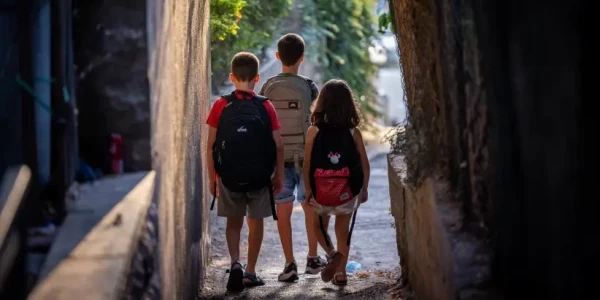Rate of sexual abuse of kids is highest among religious Zionist sector
02/08/2022 | Na stronie od 02/08/2022

Israeli kids wearing school bags. (photo credit: YONATAN SINDEL/FLASH90)
Source: The Jerusalem Post
A new study by the Ne'emanei Torah Va'avodah movement reveals dramatic data on sexual abuse victims from the religious Zionist (Tzioni Dati) sector.
By ZVIKA KLEIN Published: OCTOBER 2, 2022
Students in religious public schools in Israel are at a higher risk of sexual harassment and assault than any other of the Jewish education streams, a new study examining cases of sexual abuse from the religious Zionist sector by the Ne’emanei Torah Va’avodah movement has found.
“[These results] are a first step in the necessary in-depth discussions that oblige us to fight this phenomenon, recognize it, and to wake up from the illusion that a separated society [of men and women] is a guarantee of preventing harm.”
Ne'emanei Torah Va'avodah's Shmuel ShatachResearcher Ariel Finkelstein analyzed the scope and profile of sexual abuse victims in Israeli local authorities’ social services departments in 2020, by sector or stream.
In Israel, there are a number of educational streams: Secular public school (Mamlachti), religious public school (Mamlachti Dati) and ultra-Orthodox schools, which are either private or semi-private.
The distribution of the data on sexual abuse was filtered by sector, according to the type of educational stream where the victims are currently or were educated in their childhood.
What does the data tell us about Israeli schools? According to the survey, the rate of victims in the welfare services following sexual abuse is higher among the students of the religious public school stream, who mainly represent people who identify themselves as religious-Zionist. For every 1,000 students in the stream, there are 2.39 students who were treated in welfare services as a result of sexual abuse, higher than in ultra-Orthodox education (1.98), and more than double the amount in the secular public school stream (1.04).
The study found a correlation between religiosity and a higher proportion of males treated for sexual abuse, especially among children.
Among secular male and female students ages 3-18 who were treated following sexual abuse, boys make up less than a third (31%), while in the religious public school stream, boys make up almost half of the victims (48%), and those in the ultra-Orthodox stream make up over half (53%).
For every 1,000 boys in the religious public school system, there are 2.3 who are treated in welfare services for sexual abuse, compared to 2.07 among those in ultra-orthodox education and only 0.61 among boys in secular schools.
“The results of the study are a cause of great concern,” said Shmuel Shatach, Executive Director of Ne’emanei Torah Va’avodah.
He added that these results “are a first step in the necessary, in-depth discussions that oblige us to recognize this phenomenon, fight it, and to wake up from the illusion that a separated society [of men from women] is a guarantee of preventing harm.”